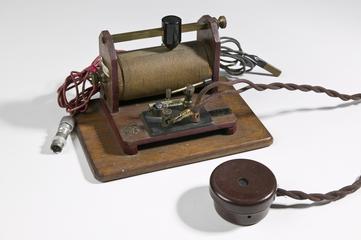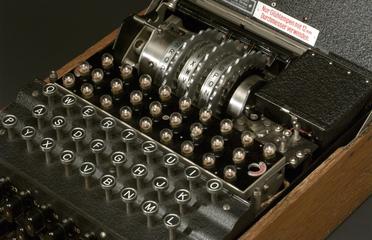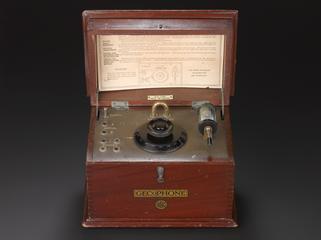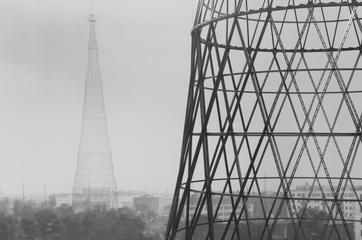
E160 airborne search radar
- maker:
- E K Cole Limited
E160 airborne search radar, made by EKCO Electronics, 1954-1970, comprising: a) E152/24A scanner S/No.M410 b) E124 indicator S/ No. 211; c) E122 trans/receiver S/No. 369; d) E164 junction box S/No. S1280; e) E162/1 control unit S/No. 102; f) E161/3 serve synch S/No. 110; g) E163/1 junction box S/No. 122. The radar operatoed in the 3cm (10GHz) band and employed a 60kW magnetron.
The E160 airborne search radar, made by EKCO Electronics was introduced into airline use around 1954 and was used exclusively on Comet, 707 and Viscount aircraft etc. It was obsolete and only in use in a few aircraft by 1970.
The aerial unit, mounted on the nose of the aircraft, swept from side to side and was stabilised to maintain its direction despite the rolling or pitching of the aircraft.
The display on the flight deck, showed clouds as luminous patches. A 'Contour' circuit could be switched in to cause a black hole to appear in clouds which would return abnormally powerful echoes, such clouds were known to be likely to contain severence turbulence.
When the aerial reflector was in the position shown, the vanes on the right had no effect on the signal, which was horizontally polarised. However, by rotating the reflector about its axis until the vanes are at the top the beam was transformed from a forward-facing cone to a downward-sloping fan, converting the radar into a mapping device. This mode of operation was frequently used for identifying coastlines.




